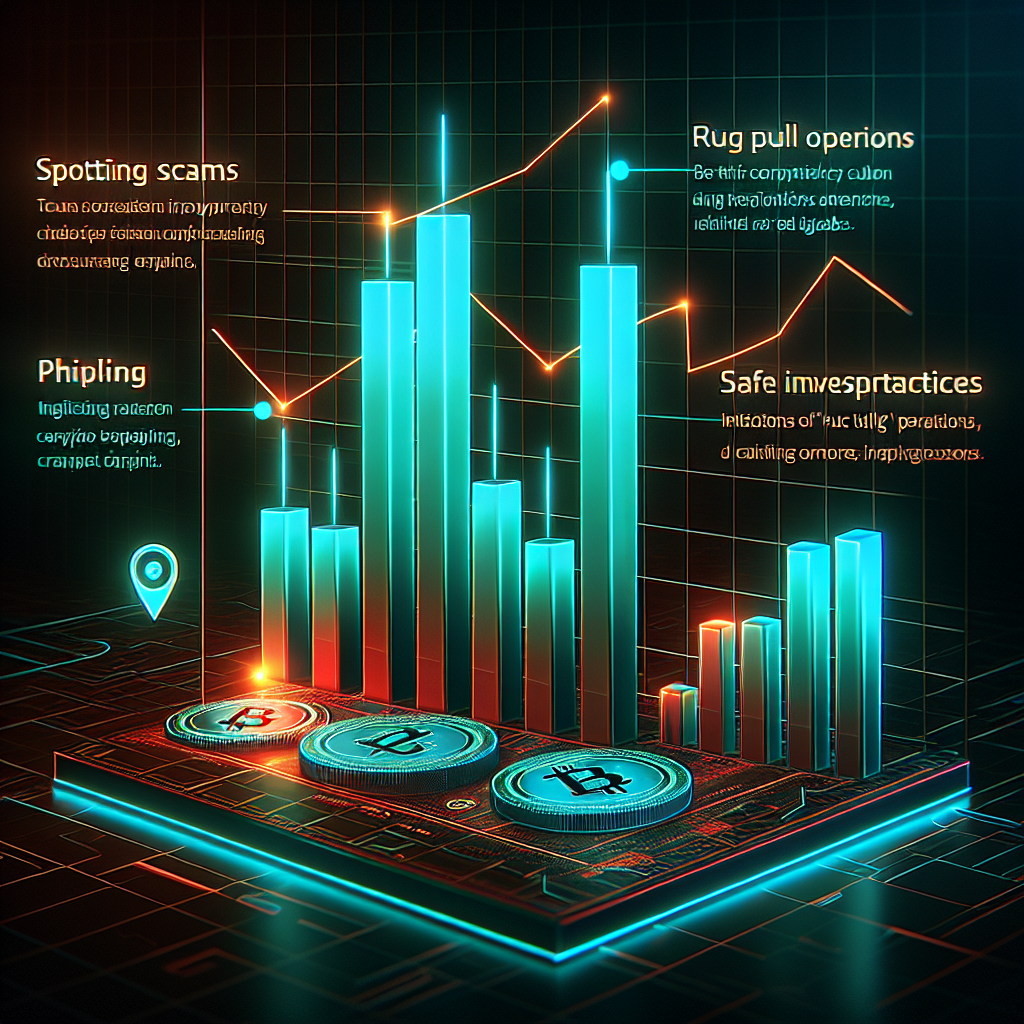Spotting Crypto Scams Early: Rug Pull Indicators, Phishing Red Flags, and Safe Investment Practices

Introduction
The explosive growth of cryptocurrencies and decentralized finance (DeFi) has opened the door to unprecedented opportunities—and a flood of sophisticated scams. From high-yield promises on newly minted tokens to counterfeit wallet apps in app stores, scammers know exactly how to prey on greed and curiosity. Learning how to recognize early warning signs, otherwise known as Rug Pull indicators and phishing red flags, can help you protect your hard-earned money and invest in blockchain projects with confidence.
Understanding Common Crypto Scams
While fraud comes in many shapes, most crypto scams fall into a few categories. Rug pulls involve project founders abruptly draining liquidity and abandoning a token. Phishing scams trick users into revealing private keys, seed phrases, or two-factor authentication codes. Other schemes include pump-and-dumps, fake mining apps, and Ponzi-style “staking” platforms. Recognizing the mechanics behind these scams is the first step toward safe investment.
Rug Pulls in Decentralized Finance (DeFi)
A Rug Pull occurs when project developers list a token on a decentralized exchange, encourage liquidity contributions or staking, then vanish after removing or “pulling” the locked funds. Because the assets sit in their smart contract or wallet, victims have limited recourse. Once the liquidity pool is drained, the market price collapses to virtually zero, leaving investors with worthless tokens.
Phishing and Social Engineering
Phishing scams use fake websites, malicious browser extensions, or convincing impersonations on social media to lure users into disclosing credentials. Scammers may clone well-known crypto projects, create near-identical URLs, or pose as support staff in Telegram or Discord channels. By understanding common social engineering tactics, you can avoid clicking compromised links and exposing sensitive data.
Top Rug Pull Indicators
The best defense against a Rug Pull is due diligence. Below are tell-tale clues that a DeFi or token project may be designed to disappear with investor funds.
- Anonymous or unverifiable team: If the founders have no public LinkedIn profiles, no GitHub activity, or use stock photos for avatars, take caution.
- Closed-source smart contracts: Transparent projects share their smart-contract code for peer review. If code is absent or obfuscated, hidden backdoors might exist.
- Unreasonable APY promises: If a yield farm offers 10,000% annual returns with no clear revenue model, the rewards often come from new investor deposits—a hallmark of Ponzi economics.
- Low liquidity and high slippage: Tokens with thin liquidity pools allow creators to manipulate price easily. Always inspect liquidity on decentralized exchanges before buying.
- No time-locked or renounced ownership: Legitimate projects lock liquidity for a predefined period or renounce the contract owner. Without these protections, developers can remove funds instantly.
- Sudden changes in tokenomics: An unexpected spike in token supply, removed transaction taxes, or altered reward schedules can foreshadow an imminent exit.
Phishing Red Flags to Watch
Phishing schemes succeed through psychological manipulation. Sharpening your skepticism helps you filter out malicious attempts.
- Unsolicited direct messages: Reputable projects rarely DM you first. Never share your seed phrase or click a link from strangers claiming to be admins.
- Look-alike domains: Attackers replace letters with numbers (e.g., “binance” vs. “bínance”) to trick hurried users. Always verify URLs and bookmark official sites.
- Urgency and fear tactics: Emails or pop-ups warning of account closure or security breaches aim to rush you into hasty decisions.
- Free giveaways requiring a deposit: Genuine airdrops never ask you to send crypto upfront. If you must pay to receive a reward, it’s likely a scam.
- Malicious browser extensions and mobile apps: Only download wallet or exchange apps from verified publishers and review permissions carefully.
- Fake customer support numbers: Scammers post bogus phone lines or chat handles that request remote-desktop access or seed phrases.
Safe Investment Practices
Beyond recognizing red flags, developing disciplined habits creates an extra layer of security for your crypto portfolio.
- Perform fundamental research: Scrutinize whitepapers, tokenomics, community activity, and audit reports. Cross-check claims with independent sources.
- Diversify and size positions conservatively: Allocate only what you can afford to lose and avoid concentrating funds in a single protocol or token.
- Use hardware wallets: Cold storage devices protect private keys from online threats, phishing pages, and malware-infected computers.
- Enable multi-factor authentication (MFA): Combine strong passwords with authenticator apps or hardware security keys on exchanges and wallets.
- Verify smart-contract audits: Trusted firms like CertiK, PeckShield, and Trail of Bits publish findings. Read audit summaries rather than relying on a project’s marketing claims.
- Monitor on-chain activity: Block explorers such as Etherscan or BscScan can reveal suspicious fund movements and wallet clustering.
- Stay informed: Follow reputable security researchers, official project channels, and crypto-focused news outlets. Timely updates can alert you to exploits before you become a victim.
Tools and Resources for Extra Security
Several free and paid tools help you vet projects and maintain operational security (OpSec):
- Token Sniffer, RugDoc, and DEXTools for contract risk ratings and liquidity tracking.
- Google Safe Browsing, PhishTank, and VirusTotal for real-time website threat analysis.
- Chainalysis and Nansen for blockchain analytics that reveal whale movements and suspicious addresses.
- Password managers like Bitwarden or 1Password to create unique, complex credentials.
- Educational platforms such as Binance Academy and Coinbase Learn for up-to-date security guides.
Conclusion
The world of digital assets rewards curiosity and early adoption, but haste can be costly. By mastering Rug Pull indicators, spotting phishing red flags, and implementing safe investment practices, you dramatically lower your exposure to fraudsters looking to exploit newcomers. Remember: in crypto, personal responsibility is paramount. Take time to research, secure your accounts, and question offers that seem too good to be true. Your vigilance today will preserve your wealth for tomorrow’s genuine opportunities.